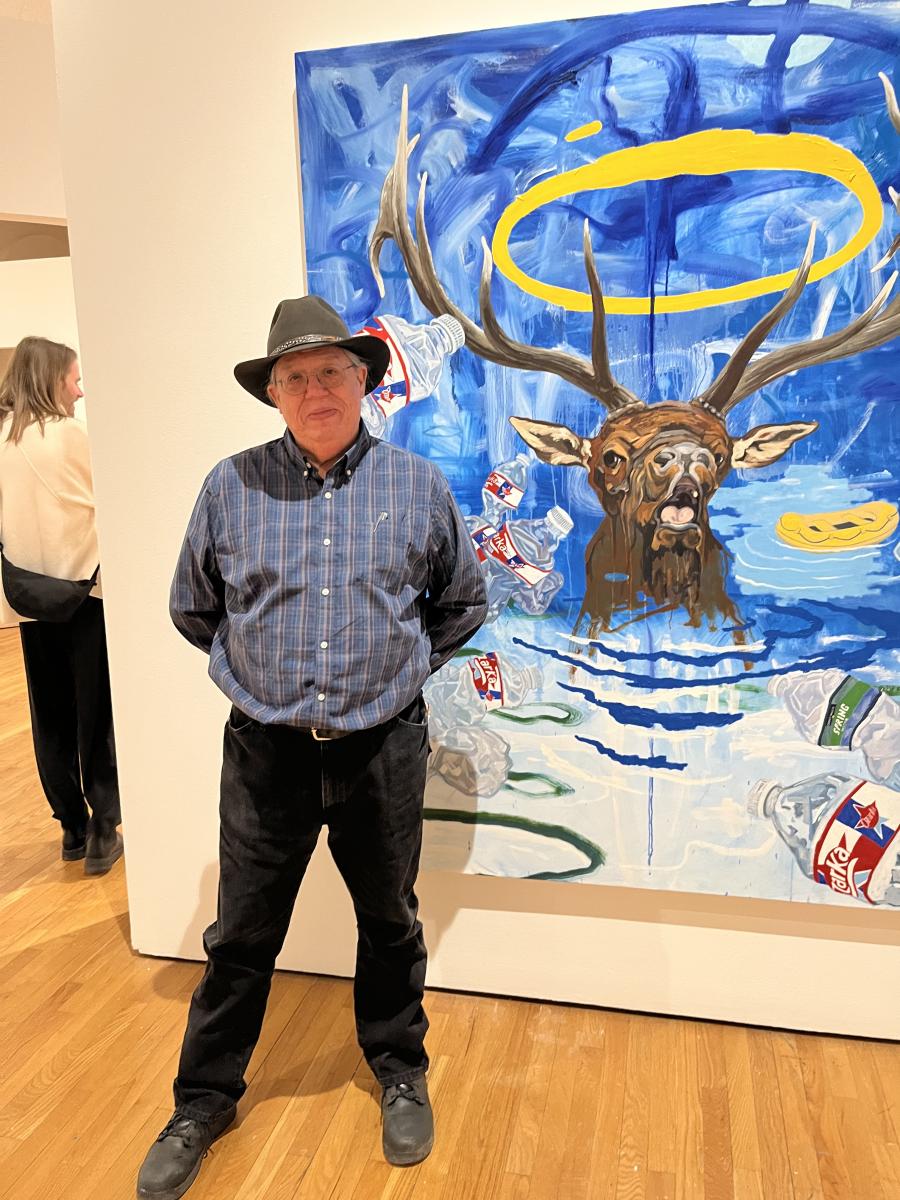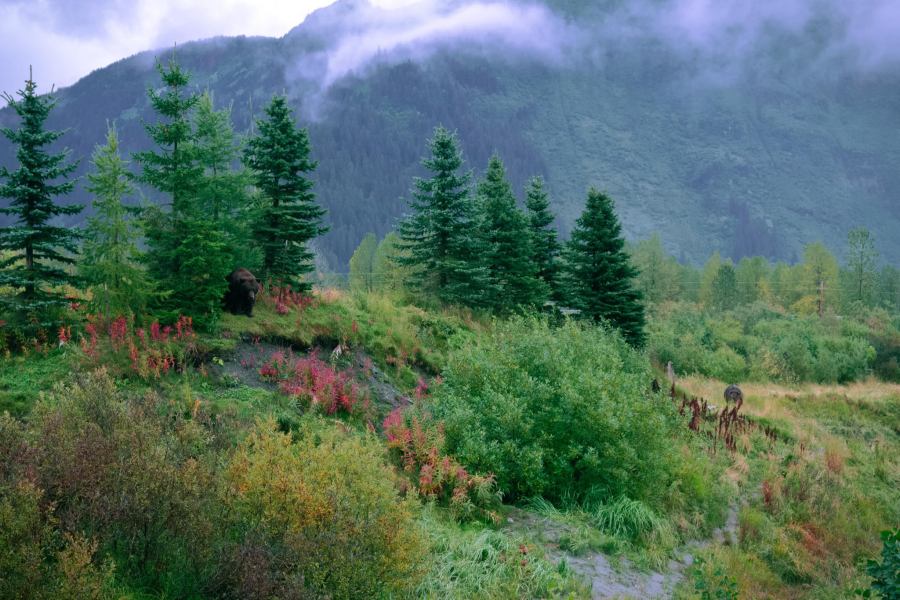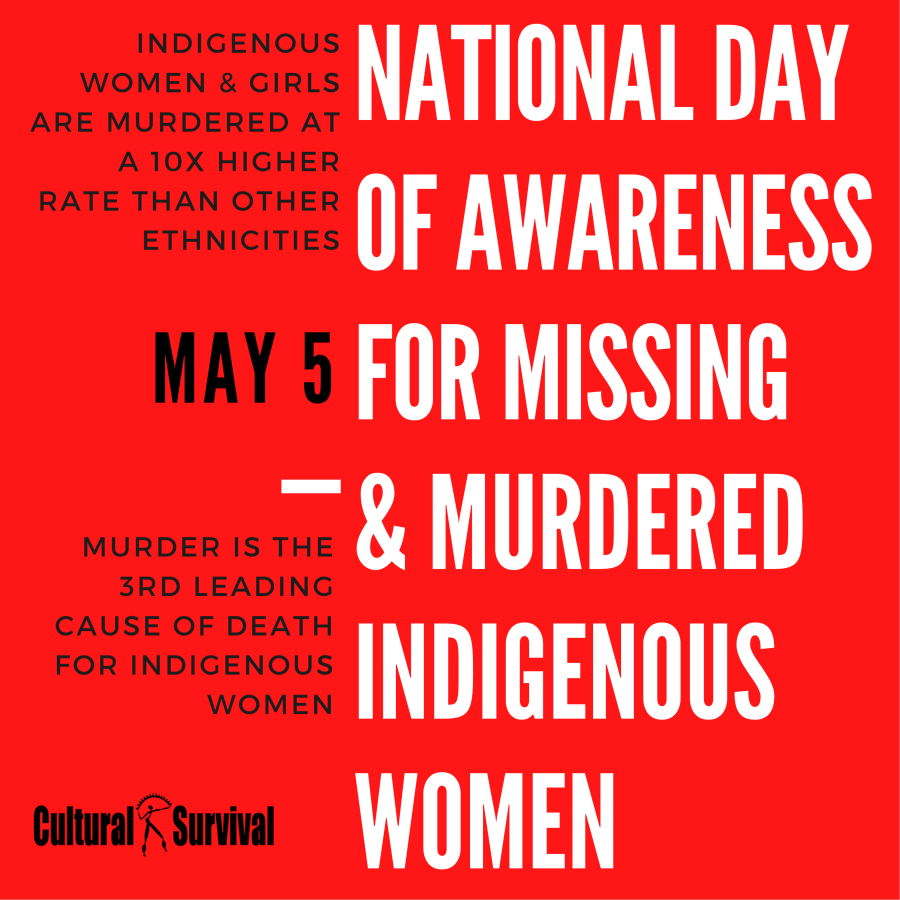INTERVIEW WITH JEAN LAMARR: Supporting Native Pride; A Native American. artist talks about her community art project for reservation and urban youth.
Jean LaMarr is a Paiute and Pit River artist. A nationally recognized community-arts activist, she teaches print-making five months of the year at the American Indian Art Institute in Santa Fe, New Mexico. The rest of the year she lives in Susanville, California, where she works in community-based projects, especially those that involve youths in creating murals. Susan Lobo, coordinator of the Community History Project at the Intertribal Friendship House in Oakland, California, conducted this interview.
My work focuses on pride in our heritage because the town I grew up in is very racist. I was proud of being Indian, but nothing was supportive of this. There was very little community activity, very little ceremony, very little traditional activity. But I knew something important was there and felt that something had to be done.
I was always an artist in school; they were always having me do the classroom art. They had me paint a mural of Sir Francis Drake christening the Indians, the Indians bowing down to him. Well, this was the beginning of some of the mural work that I did.
Mural work is so important to me. I like to do large paintings, but I didn't like the European mentality of having one painting for one patron or just one person. I like the community-art aspect. I was affected by the Chicano art movement. They did murals around town for the community. Also, I began in print-making. I just loved to print because it was multiples - many prints for many people. I liked what Jules Heller had to say about the print medium: it is for so many thousands of people, while one painting is for one person for many thousands of dollars.
The first art project that I ever worked on as a teenager was doing posters and fliers inviting everyone to come to the Bear Dance. The Bear Dance is a spring ceremony of the Maidu people up in our area. It is a welcoming. All the animals come out of hibernation and new life begins. It is the beginning of the new year. It is a time to renew your spirit, a time to cleanse yourself of any bad feelings. All the people come together. Even enemies come together and put down their past feelings, renew their friendship, and pray for the next year.
My aunt who put on the Bear Dance had me do fliers and little projects. It was an honor to put the posters around town. People would steal them, and I got a big kick out of that. It meant people really liked my work and wanted my work. So even then I think I had begun community-based art - bringing information to people, beckoning them into our world, and trying to make them understand our world.
I went to school at the University of California at Berkeley after the Third World Strike and Native American studies began. The Third World Strike was in the late sixties. People of color wanted a voice in the educational system, but they had to turn to drastic measures to get their voices heard. They began recognizing the importance of people of color, rather than just the white system that was taught before. A lot of people were involved in striking and protests were going on. They changed the system at the university.
I still wasn't allowed to do anything in my artwork that reflected my heritage, however. Here in California, cultural diversity plays an important role now, but when I was going to school as an artist, cultural diversity was not considered an important part of the fine-arts movement. It was always a white Renaissance European artist that was represented as important.
A few artists had political information in their work. I went to school during the time of the occupation of Alcatraz in 1969, and then the Wounded Knee occupation and the Pit River occupation. All of this influenced my work. As a student, I would always try to have this information in my work, although during critiques, I would always have to have colorful abstract paintings. Then I would go home and add the real stuff to it later.
FACING RACISM
Probably our biggest obstacle in the rural area where I live is racism. Our kids rarely finish high school, rarely get a good education, and rarely are prepared to go on to college. We need to get our children in school and have pride instilled in them about their heritage. We are so isolated from other parts of the country. I think it would make a difference if Indians knew how the world and other people care about us. I have been fortunate enough to be able to travel.
Many people are concerned, but in our little community they don't know that other people do care. We did have a situation recently where a coach was beating up on Indian kids and it was on TV, on "20/20." This coach was allowed to victimize Indian students with racist name-calling and physical abuse. The school district allowed it, and so the California Education Department said, "We are not going to give your school district education money unless you do something about it." Finally something was done. It took a lot of pressure, a lot of support from non-Indian people to get this done.
Now if Indian people had tried to protest, to get something done, nothing would have happened. In this case, with the support of non-Indian people, it did become known that this kind of treatment of Indian kids was going on. The superintendent finally retired, and they put the coach on limited retirement. he was ordered to take cultural sensitivity training, but they haven't found anybody to do it. To me is that is saying, "We don't want to give sensitivity training."
So these are the kinds of things we have - poverty, isolation, racism, lack of education. All of these are interrelated. They all have an effect on each other. I think once we start working on one area, for instance, if we work on getting our kids through high school, this will affect the other areas. We need more information out. Indian people need to know that other people care. It is important to have stories and information out. We were happy there was something on our community on TV, even though it was negative. So very little recognition has been given to Indian people.
Our Indian youth need support in their pride. They don't understand why they are Indian and what their heritage is about. Most of their parents went to boarding schools where all recognition of their heritage was erased. The parents were forced to believe they had to be part of the melting pot and forget their language and culture. And yet we still have Indian kids up there who are not finishing high school. Many kids drop out of school in seventh and eighth grade. They are dealing with cycles of alcoholism and poverty in their families, and most of the families are on welfare. This is what I am working on in my community.
THE MURAL PROJECT
We badly need role models for our youth. We have talked about how we need to set people up as role models. It has been traditional not to set someone up above everybody else - we are all equal - but I think in this situation, during this time, it is important that our young people have role models, and that we continue to show them there is hope. I think this is what our youth are fighting against, this hopelessness.
I try to counteract this isolation with my projects with Indian youth. For example, we did a mural project in the summer of 1991 that involved youth from a rural area working with Indian youth of an urban area. The project was in cooperation with the Community History Project at Intertribal Friendship House, an Indian community center in Oakland, California. With their support, we were able to have a wonderful project.
As a result of that project, we have a mural at Susanville that depicts how Indian youth grow up and live in the urban area, and we have a mural at Intertribal Friendship House about how Indian youth grow up in rural areas. The youths determined what would be in the mural. They decided what is most important to them. They were a part of the design process. They did almost the whole design and execution of the mural, and they are very proud of it.
In Susanville there are so many negative stereotypes about Indian people, but this mural shows non-Indian people that Indian youth are in urban areas, not just on reservations. They live within a city system with all the rapid transit and the typical urban living with skateboards. It is very different from rural areas. The rural youth involved in the project got to come down to the Bay Area, to travel around, and see what it was like. To them it was a whole different world, and it was an opportunity to see employment or education options, to see they could function outside a rural community.
We tried to do as much publicity as possible. The students were so proud to see their pictures in the paper. The parents were proud, and the grandparents were proud. The youths who were in the project said that kids in school came up to them and said, "We saw your picture in the paper!" "That's a wonderful project you worked in." "I didn't know you were an artist." So they got a lot of good recognition from their peers, from their families, and from their community.
THE ROAD AHEAD
In Susanville, we would like to have a museum some day, but that is probably a long way off. It is important that we have one, because it would show the non-Indian community and our own Indian community how rich in Indian heritage we are. They need to know what has happened in the past, how it affects our present, and how we will determine our future.
One important thing is getting information to the general public about Indian people. People need to know what Indian people are living like right now. Most non-Indian people in our own community are not sympathetic, but I think the general public, the world, is anxious for information. It is important that more publications tell the truth, tell the Indian story, with Indian people telling their own story regarding how we have our own community projects that determine our own future.
It is very important that Indian people decide what projects will be done, rather than the way it was done before. An agency would come in and say, "This is going to happen to your community, so we are going to hire you to do this project." We need our own people to decide what kinds of projects we will have for ourselves that support our community, be it economic or cultural.
We are trying to make some inroads, trying to do research and get some cultural materials back to our communities. We have been having pow-wows in Susanville for the past six years. This has helped support the Indian kids in feeling pride in who they are. I do think education is important for our Indian youth. They might not be scholars, but at least they will know who they are. What is the result of the colonization and racism of the past 500 years? Why are they here? Indian youths can't blame themselves. We have to realize what has caused us to get into the situation that we are in today. Why is there so much poverty in our communities? Why is there no education? When we understand all that, we can make progress, step by step out of the perpetual poverty we are in.
HOW YOU CAN HELP
One of the most important things non-Indian people can do is get to know your local Indian community. No matter what part of the United States you are in, Indian people are around. You may not see them. They may be invisible. But there are community centers, health clinics, little reservations, or just isolated pockets. There are communities of Indian people. Get to know them and find out what kinds of projects they want to do. These are grassroots community projects. You will see progress when the Indian people are in a position to do their own projects.
In my situation, I was helped with seed money from the American Friends Service Committee, to get a tape recorder so we could start interviewing the elders. This helped so much because that fit into the mural projects with the youth and elders getting together. Because of this small donation, the Indian people are feeling a real pride in the murals that we have done. It is a lasting thing. Getting paint and brushes might not seem like much, but even a small amount helps out.
Think about projects that will have a lasting effect. There might be an important elder in the community who is getting old. And there might be a high school student who is his or her grandchild. Support that student to interview the grandparent. Even if it is never published, that student will feel pride and eventually do something with the material.
When I see Indian students in high school, I am so glad. I support them because it is a wonder they got there, because of the high drop-out rate with Indian youth, and the alcoholism and the suicide rate for Indians, which is 10 times the average throughout the nation. If we can support high school students through education and building and recognizing their pride, this is probably one of the most important things we can do.
I teach at the Institute of American Indian Art in Santa Fe, and a woman there is having a long-range effect on some of the students. She supports them through encouragement: she buys their art work. Rather than going to a New Age store and buying something that looks Indian, buying something by "Sunbeam Feather" and not knowing who the artist is, this woman got to know the students. She supported them by buying their art work and encouraging them.
A lot of non-Indians feel they are helping the Indian communities by buying Indian art. But there are a lot of non-Indian people out there, pretending to be Indian because it is a gimmick to sell art. Rather than buying something from a store where you don't know if they are Indian or non-Indian, actually get to know the Indian community.
Projects for the Future
Country: United States Project: Bizhibayaash - Circle of Flight Tribal Waterfowl Intiative
Circle of Flight, an inter-tribal strategy in the central United States, preserves and improves wetland ecosystems and related habitats for waterfowl and other species. The program began two years ago under the auspices of the North American Waterfowl Management Plan.
Over the last century, industrialized agriculture has spread throughout prairie grasslands at the expense of the scattered pond and wetland habitats that are critical to waterfowl passing from the Northern to the Southern hemisphere along the Mississippi and Atlantic flyways.
A joint-venture component of the North American Waterfowl Management Plan supports enhancement projects in the United States, Canada, and Mexico. 1991 and 1992 projects included establishing wildlife refuges, restoring wetland sites, building impoundments and nesting islands, and improving wild-rice production.
Wild rice is significant both for providing food for migrating waterfowl and as a major food source for people in the prairie region. Tribes in the Circle of Flight program manage about 50,000 acres of wild-rice beds.
In all, 18 tribes of 21 reservations have identified 30 projects in the program.
Address: North American Fish and Wildlife Society, 750 Burbank St., Broomfield, CO 80020
Article copyright Cultural Survival, Inc.



